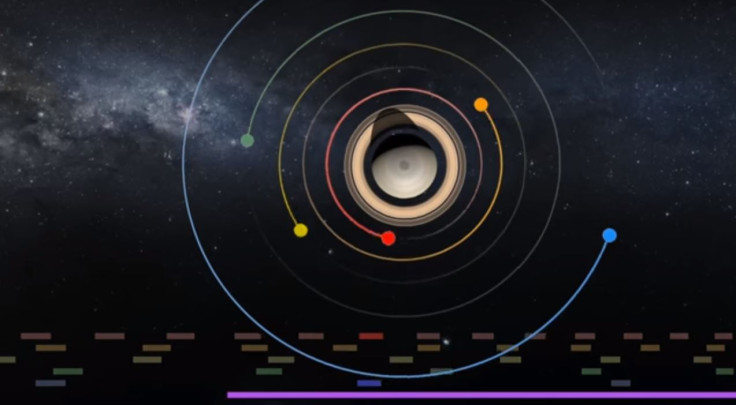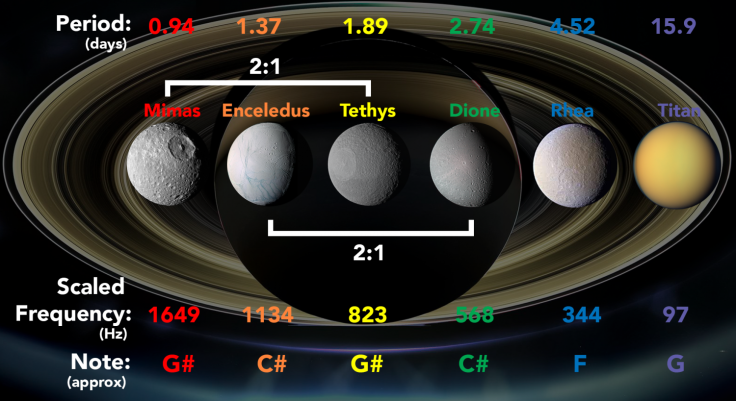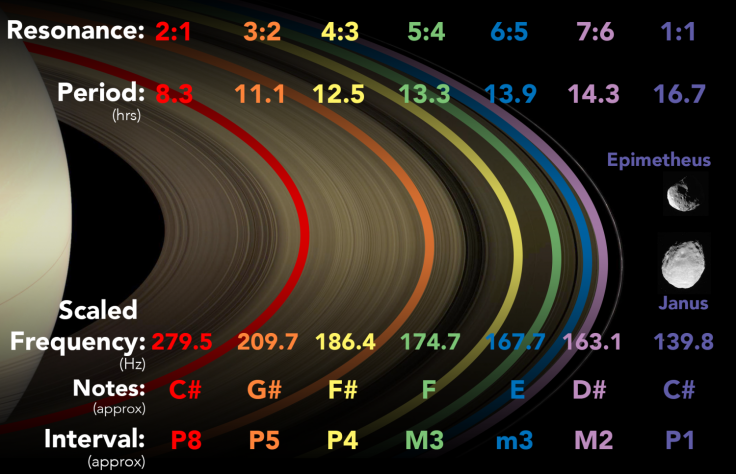Scientists Convert NASA’s Cassini Spacecraft Data Into Music

Music isn’t something only Earth can create — there are sounds all over our solar system and our universe. NASA’s Cassini spacecraft is going to take its life-ending plunge into Saturn in just a couple of weeks, but we could listen to the messages it sent back home for years to come because scientists have translated data from that planet and its moons and rings into music.
The University of Toronto said that a team of astrophysicists took the orbital resonances of Saturn’s moons and dust particles of its rings and converted those frequencies, caused by the gravitational influence celestial bodies exert on each other, into sounds humans can perceive. The result is two musical tracks that were essentially made with “an instrument measuring over a million kilometers long.”
Cassini collected the data that made this musical conversion possible. That spacecraft has been in operation for several years but is scheduled to dive into Saturn on Sept. 15 to end its mission.
“To celebrate the Grand Finale of NASA’s Cassini mission next month, we converted Saturn’s moons and rings into two pieces of music,” astrophysicist Matt Russo said in a statement from the university.
He and astrophysicist Dan Tamayo, as well as musician Andrew Santaguida, had to increase the frequencies from the orbital resonances of the size large inner moons by 27 octaves to create one of the pieces, which arranges the sounds by the final path that Cassini will take as it plunges into Saturn.
“What you hear are the actual frequencies of the moons, shifted into the human hearing range,” Russo explained.


The university describes the music as having a “dramatic rising pitch” caused by the increasing orbital frequencies as Cassini moves over the rings.
The project also included making a wood carving of Saturn’s rings that allows people to follow along with the music in a physical sense. It also allows the visually impaired to understand what the rings look like as they listen to the music.

The second audio track represents sounds coming from two irregular moons of Saturn, Janus and Epimetheus, which orbit at almost the same distance from Saturn. The moons are chasing each other around their host planet, swapping places once every several years.
“Together, the two moons play a unison drone but with a constantly shifting rhythm that repeats every eight years,” the university said, to describe that musical piece. Russo said, “Saturn’s dancing moons now have a soundtrack.”
This isn’t the first time that data from Saturn has been converted into sounds humans could perceive. Back in May, NASA’s Jet Propulsion Laboratory released audio files representing Cassini’s groundbreaking first-ever dive through the gap between Saturn and its rings. The audio contains whooshes and squeaks that the spacecraft sent back to Earth, representative of charged particles that it encountered during the journey.
© Copyright IBTimes 2024. All rights reserved.




















